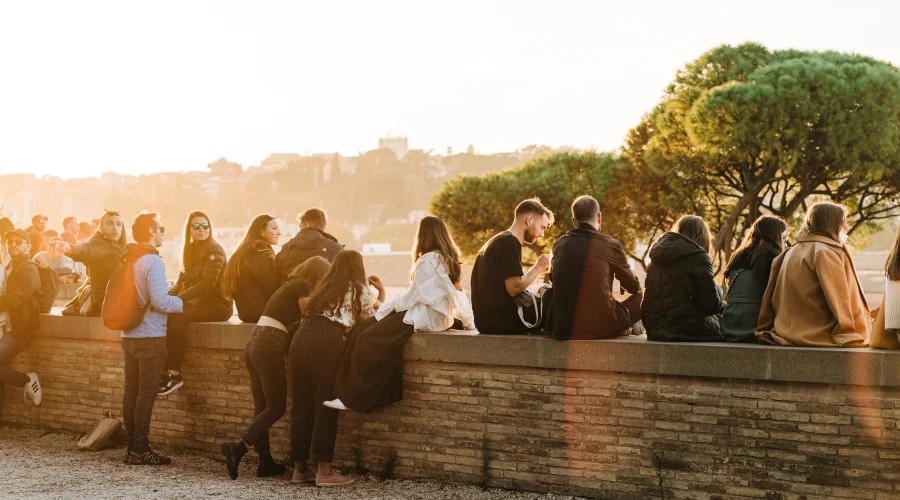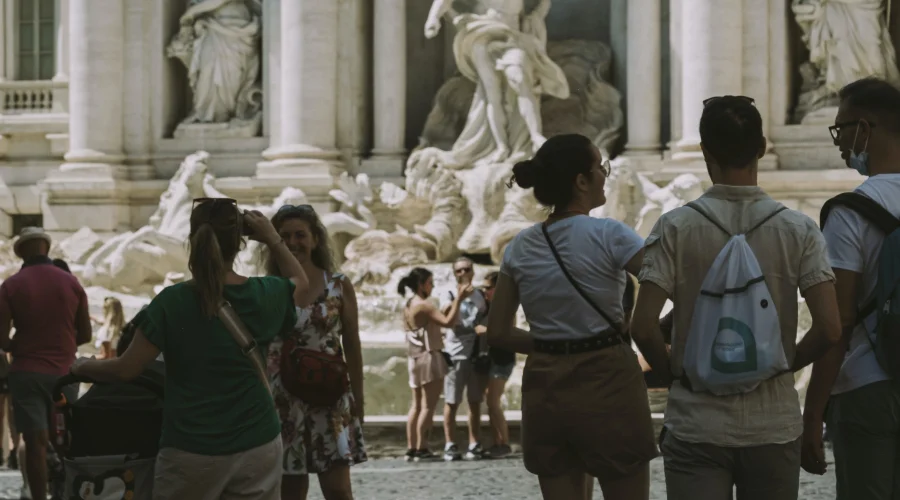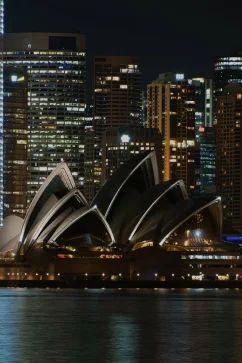Discover Rome: Activities, Food and Accommodation for Group Tours

Rome, the Eternal City, is a dream destination for tour groups looking to immerse themselves in rich history, delicious food and stunning architecture. With its vast amount of attractions and culinary options, planning a group trip to Rome can seem overwhelming. But don’t worry, we’re here to help you discover the best activities, restaurants and accommodations to help your group have an unforgettable experience.
Group Activities in Rome
On your trip to Rome you can not miss visiting the highlights such as Colosseum and Roman Forum, the Vatican, the Trevi Fountain and the Pantheon, but you can make a visit even more fun, with an evening storytelling evening at the Colosseum or the Roman Forum to discover the history and legends of Rome creating a magical and unique experience.
An intriguing and lesser-known part of the city that offers a unique insight into its history and heritage is subway Rome. Some of the sites that make up this experience are the Catacombs of St. Callixtus, the Catacombs of St. Sebastian and the Catacombs of Domitilla, Crypt of St. Cecilia in the Basilica of St. Cecilia, Basilica of St. Clement, Domus Aurea, House of Augustus and Mussolini’s Bunker.
Depending on the number of people in your group, you can make a creative day out of it by splitting into teams and organizing a photo rally in Rome. Make a list of iconic places and photo challenges and choose a prize for the team with the best photos at the end of the day.
You can add a touch of nature by discovering treasures such as a series of hidden gardens and courtyards in the city. You will enjoy a unique and relaxing experience in places like Orto Botanico di Roma, Villa Celimontana, Giardino degli Aranci, Villa Farnesina, Roseto Comunale, Gardens of Palazzo Barberini, Gardens of Villa Borghese and Villa Torlonia.
If you want to immerse yourself in the daily life of the city, you can take a tour of its local markets such as the Campo de’ Fiori Market, Mercato di Testaccio, Porta Portese Market, Via Nomentana Market, Mercato Esquilino, Mercato Trionfale and Mercato delle Stampe.
If you feel like having a different experience full of learning, you can attend a specialized workshop of Roman mosaics, they are an important part of Roman art, and you can make your creations following the traditional Roman techniques. You can also attend an Italian cooking class where you will learn how to prepare traditional dishes, such as fresh pasta or pizza, and then you can enjoy the food you have made.
If you have extra time, consider an excursion to Pompeii. This ancient archaeological site is an impressive testament to life in ancient Rome and is about a two-hour train ride from Rome and a short drive from Rome, Tivoli is home to the Villa Adriana and Villa d’Este, two UNESCO World Heritage Sites.

Vibrant nightlife in Rome
Nightlife in Rome is lively and varied, so there are many options for tour groups wishing to enjoy the city after dark.
Trastevere is one of Rome’s most lively nightlife districts to explore its cobblestone streets, bars, cafes and also offers you the opportunity to experience wine tasting in wine shops such as Antica Enoteca or Il Vinaietto.
If you feel like enjoying night culture, do not hesitate to attend an opera or theater show in one of the city’s historic theaters such as the Teatro dell’Opera di Roma or look for open-air movie screenings in historic places such as the Circus Maximus or Castel Sant’Angelo.
If you want to enjoy live music in a relaxed atmosphere, the city offers a variety of pubs such as The Drunken Ship, Freni e Frizioni, Scholars Lounge, Salotto 42, Jerry Thomas Project, Barnum Café, Bir e Fud, Black Market, La Botticella or The Public House.
And for music and dance lovers there are several areas and districts where you can find discos and clubs. Some of the most outstanding areas are Testaccio, Ponte Milvio, Monti, San Lorenzo, Via Veneto, Colosseo, Ostiense, Piazza Navona or Circus Maximus.

Roman Gastronomy
Rome offers a wide variety of places to eat for tour groups, from traditional Italian restaurants to more contemporary options. Here are some recommendations:
Local trattorias: trattorias are informal Italian restaurants that usually offer menus with traditional dishes. Popular examples in Rome include Da Enzo al 29 in Trastevere and Da Tonino in the Ghetto neighborhood.
Roman food restaurants: Rome is famous for its regional cuisine, and there are restaurants dedicated to authentic Roman dishes such as pasta cacio e pepe and amatriciana. You can consider places like La Carbonara in the Monti neighborhood or Osteria Da Fortunata near the Pantheon.
Buffets and buffet-style restaurants: for groups wanting a self-service experience, some places offer buffets with a variety of Italian dishes. This allows diners to select their own dishes and is a convenient option for large groups. One example is Caffè delle Arti, near the Spanish Steps.
Restaurants with terrace or garden: if the weather permits, looking for restaurants with a terrace or garden can be an excellent choice for groups. They offer a pleasant and spacious atmosphere to enjoy dining outdoors. Il Margutta RistorArte is an example with a beautiful terrace.
Food markets and food trucks: for groups wanting a more informal experience, food markets and food trucks may be an option. The Campo de’ Fiori Market offers a variety of Italian food options and is ideal for groups wishing to sample a variety of dishes.

Group Accommodations in Rome
Rome offers a wide variety of accommodation options for tour groups, ranging from large, luxurious hotels to budget hostels and rental apartments. Here are some options for groups in different price ranges:
Large, centrally located hotels: Rome has a number of chain hotels that can accommodate large groups. Examples include the Hotel Quirinale, Hotel Artemide and Hotel Mediterraneo, all located in the city center.
Hostels: If you are looking for budget accommodation options for groups, consider staying in a hostel or guesthouse. Rome has several hostels offering shared and private rooms. Some examples are the Alessandro Palace & Bar Hostel and the Generator Rome Hostel.
Boutique hotels and guesthouses: If you prefer a more intimate and personalized atmosphere, Rome has a number of charming boutique hotels and guesthouses that can accommodate small groups. Examples include Hotel Raphael and Hotel Artemide.
Accommodation in the outskirts of Rome: if you are looking for cheaper options or are willing to stay a bit outside the city center, consider areas such as Tiburtina or San Giovanni, which are well served by public transportation.
Hotels with meeting and conference rooms: if your group needs meeting or conference space, consider looking for hotels that offer dedicated meeting and conference facilities, such as the NH Collection Roma Centro Hotel or The Church Palace Hotel.
Tips for Groups in Rome
- Book your activities and accommodations in advance, especially if you are traveling in high season.
- Research public transportation options in Rome and consider purchasing transportation cards to facilitate group travel.
- Make sure that all members of your group have travel insurance to cover you in case of emergency.
- While it is important to have an itinerary, it is also crucial to be flexible and willing to make adjustments according to the group’s preferences.
- Remember to respect local customs and norms, such as proper dress in religious sites and manners in restaurants.

Conclusion about plans for groups in Rome
Rome is an exciting and diverse destination that offers an unforgettable experience for tour groups. From rich history to delicious Italian food and a wide variety of accommodation options, Rome has everything you need to enjoy an unforgettable group trip – get ready to explore the Eternal City and create memories that will last a lifetime!









